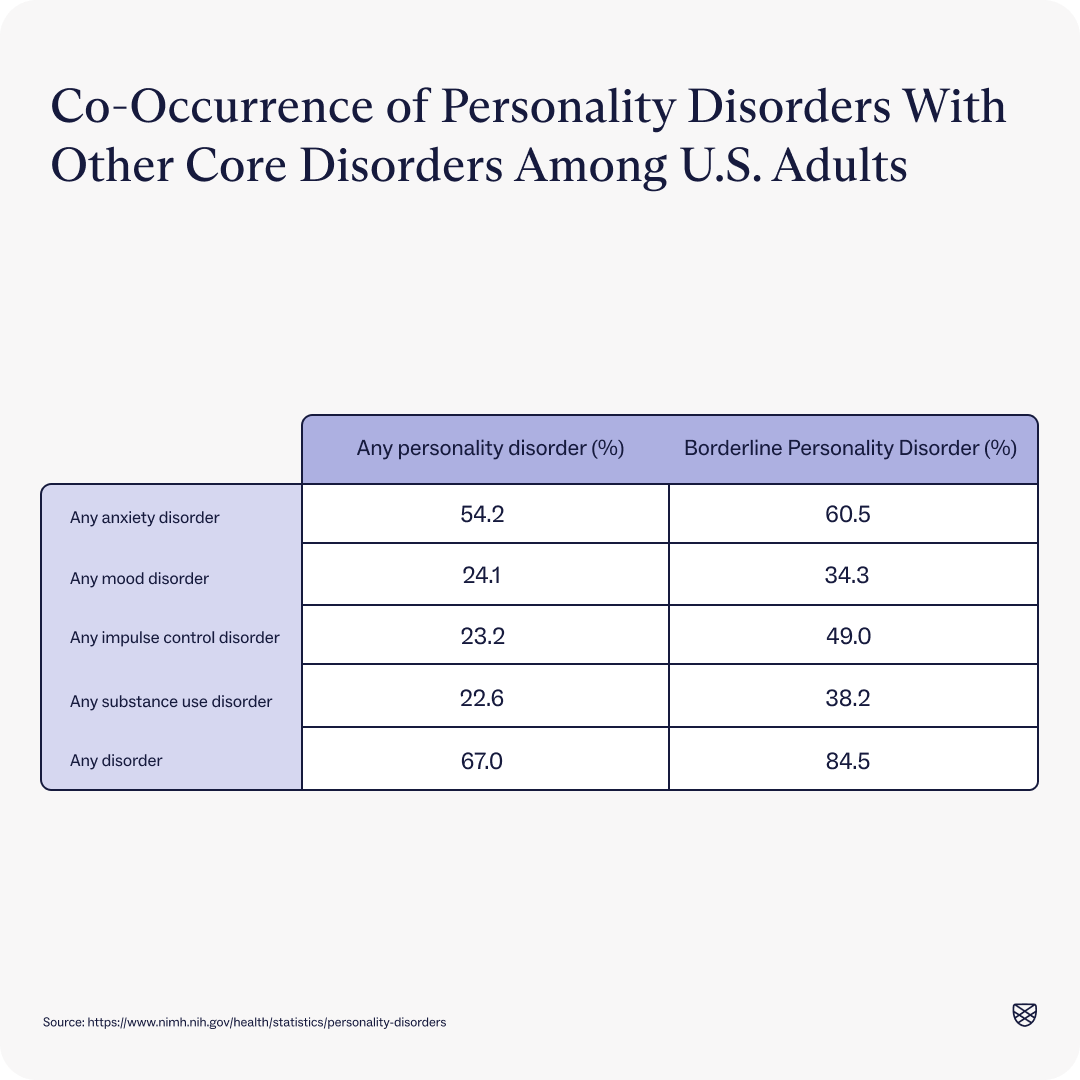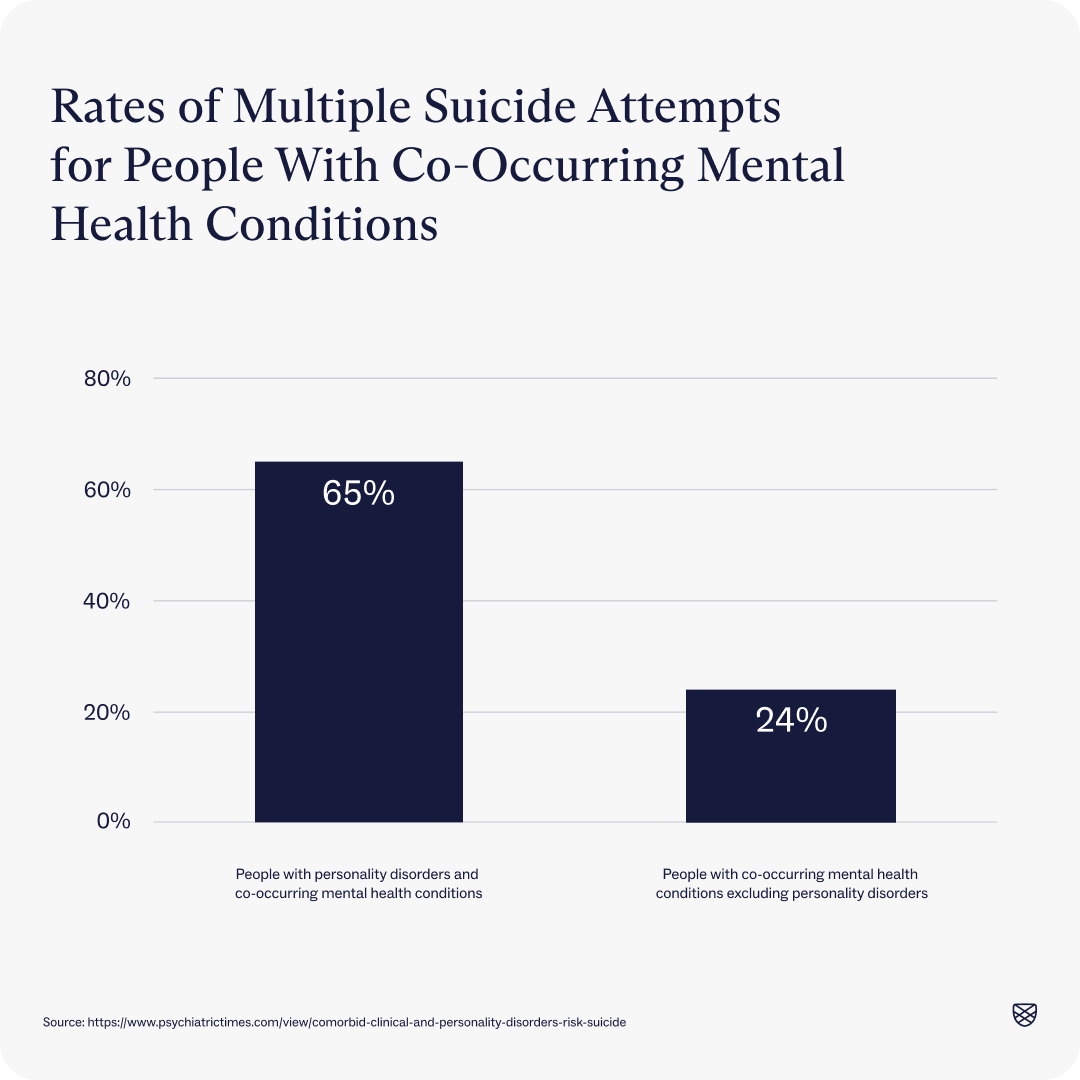Commonly misunderstood and stigmatized, personality disorders affect an estimated 15% of American adults. Here's what to know

A lot has been done to destigmatize mental health in our culture, but many complex mental health conditions remain mired in stigma. While talking about anxiety and depression is commonplace, higher-acuity conditions are often still discussed in hushed tones and behind closed doors. Among these conditions are personality disorders—a group of mental health conditions marked by consistent behaviors and thoughts that deviate from societal norms, causing difficulty with maintaining relationships, managing emotions, and coping with stress.
Personality disorders are often misunderstood and, at times, regarded by the general public and healthcare providers as misbehavior instead of a legitimate mental health condition. However, these conditions are more common than one may think. Studies have found that as many as 15% of Americans, or 30.8 million adults, meet diagnostic criteria for at least one personality disorder (other studies put the prevalence at closer to one in 10).
Since personality disorders comprise a broad spectrum of conditions, they are grouped into three clusters—clusters A, B, and C—based on features and symptoms. Cluster A personality disorders, like paranoid and schizoid personality disorders, are usually defined by isolation and paranoia. On the other hand, people with cluster B personality disorders like borderline and narcissistic personality disorders tend to have intense, unpredictable behavior patterns and emotions. Lastly, cluster C personality disorders, like obsessive-compulsive and avoidant personality disorders, are marked by high anxiety, fear, and perfectionism.
Still, personality disorders within the same cluster often have different symptoms. For instance, borderline personality disorder (BPD) is marked by intense mood swings and impulsive behavior, whereas narcissistic personality disorder (NPD) is characterized by an inflated sense of self and a lack of empathy for others, even though both fall into cluster B).
Despite these differences, most personality disorders can be effectively managed with treatment. There is robust research showing that talk therapy and medication are effective at treating a range of personality disorders.
To separate myth from fact, Charlie Health combed through the numbers, looking at data on the prevalence of certain personality disorders and how the conditions co-occur with other mental health conditions. Keep reading to see what the data reveals.
Personality disorder rates are higher in high-income countries
Whereas about one in 10 American adults (if not slightly more) meet diagnostic criteria for a personality disorder, the worldwide prevalence is lower—sitting at about 8%, according to a 2020 literature review. The review, which analyzed 46 studies from 21 countries across six continents, found that personality disorder prevalence rates in high-income countries were about 10%, whereas low- and middle-income countries had rates of 4.3% on average. This variability is likely attributable to a range of factors—including study design and availability of diagnostic resources—but still shows that we need to improve our understanding of population needs and regional differences when it comes to the conditions.
Some personality disorders are more common than others
Rates of prevalence between cluster A, B, and C personality disorders vary based on the disorder type. One study in the US found that obsessive-compulsive personality disorder is the most common (7.9%), followed by NPD (6.2%) and BPD (5.9%). This study suggests that cluster C disorders are among the most common, which conforms with data in the 2020 worldwide literature review. According to that review, global rates of cluster A, B, and C personality disorders were 3.8%, 2.8%, and 5% respectively.
Two-thirds of people with a personality disorder have other mental health conditions
Data from the National Institute of Mental Health (NIMH) shows that about two-thirds of people with any personality disorder also have another mental health condition (67%). This co-occurrence is higher for people with BPD, 84.5% of whom have another mental health condition, according to NIMH data. The national data conforms with other studies that have found cluster B personality disorders (including BPD) most commonly overlap with other mental health conditions.


Many people struggling with substance use disorder (SUD) also have a personality disorder
Whereas about one in 10 people may struggle with a personality disorder, rates are much higher among those treated for SUD—with prevalence up to one in seven addiction treatment patients (73%), according to a 2018 study. While rates are high among all people with SAD, the study found that patients with drug use disorder have a higher prevalence of personality disorder compared to those with alcohol use disorder.
Also, the co-occurrence of the two conditions correlates with the severity of the SUD, meaning people with a more severe SUD are more likely to have a personality disorder, the study found. And, struggling with both a personality disorder and SUD tends to lead to worse treatment response and outcomes, according to the study.

People with personality disorders are more likely to attempt suicide multiple times
Many people who attempt suicide have co-occurring mental health conditions, data shows, and rates are especially high among those who have personality disorders (and another condition). A 2016 study found that about two-thirds of people (65%) with personality disorders and co-occurring conditions had made multiple suicide attempts, as compared to about one-quarter (24%) of those with other co-occurring conditions, excluding personality disorders.
If you're having thoughts of harming yourself or someone else, this is a mental health emergency, and you should contact The Suicide & Crisis Lifeline by calling or texting 988.
Less than half of people with a personality disorder get treatment
As mentioned, personality disorders are often treatable with a combination of therapy and medication. Dialectical behavior therapy (DBT), for example, has been shown to reduce suicide attempts, self-harm, and risky behaviors in people with personality disorders, and a study cited by the American Psychological Association (APA) found that BPD symptoms dropped significantly after a year of cognitive behavioral therapy (CBT) treatment.
Unfortunately, though, less than half of adults with the condition report receiving mental health treatment in the past year, according to NIMH data. According to the data, only about a third of people with any personality disorder (39%) received treatment, with rates slightly higher (42.4%) for those with BPD.
If you or a young person in your life is struggling with a personality disorder or symptoms of a personality disorder, consider seeking support from a licensed mental health professional. You can search for providers in your area online or get a referral from a primary care physician—just remember to ask if a person has experience treating personality disorders.
This story was produced by Charlie Health and reviewed and distributed by Stacker Media.
